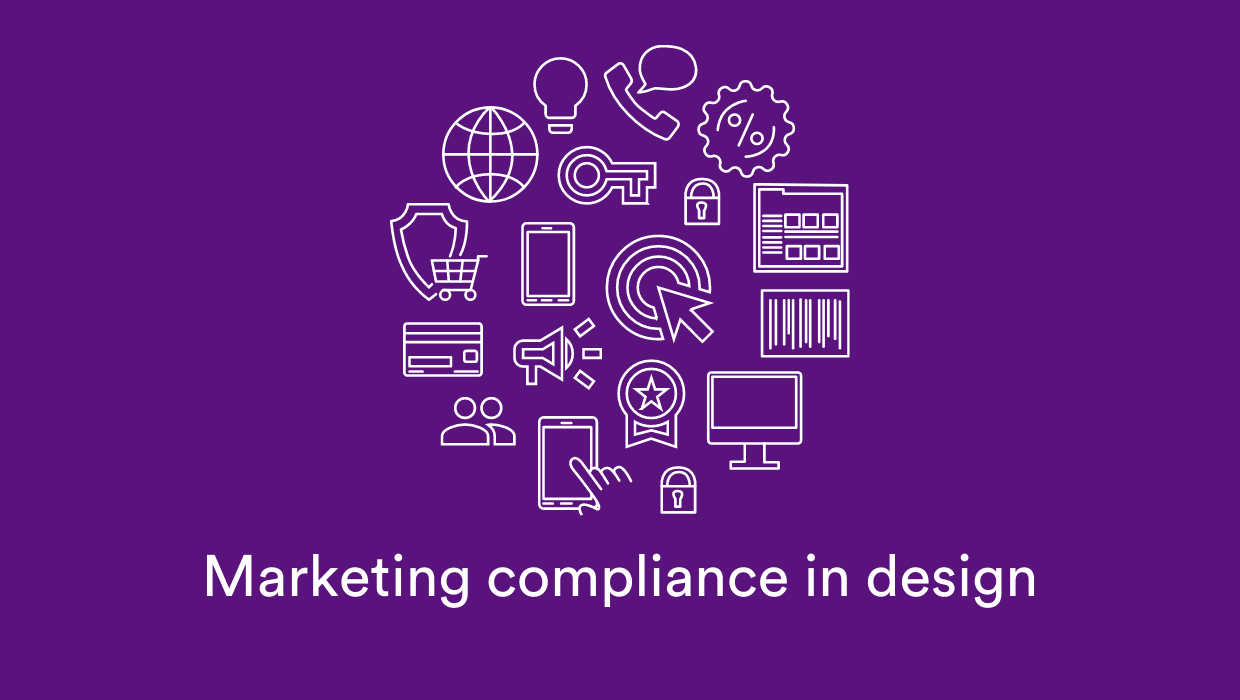3 Key Tools for Designers to Ensure Marketing Compliance


Marketing compliance is a crucial aspect of any business that wants to protect its brand and maintain consumer trust. In a busy world, it is easy for marketers to overlook their compliance responsibilities, but it has become more important than ever with the tightening of regulations, as well as consumers becoming more aware of brands that are inconsistent in their messaging.
What is marketing compliance?
Marketing compliance is categorized into two areas, internal and external compliance, and both need to be compliant to reassure consumers that the brand meets the highest of marketing standards.
Internal marketing compliance
Internal marketing compliance is regulated by the brand itself and requires businesses to ensure that their brand is consistent across messages and overall identity. Consistent branding builds instant brand recognition, loyalty, and trust, which are vital links between the brand and the consumer.
External marketing compliance
External compliance, on the other hand, involves regulatory laws and guidelines that are in place to protect consumers and their data. These laws are created and monitored by government bodies and consumer watchdog organizations, and they ensure that marketing, advertising, and sales content follow strict rules and standards to protect consumers from false claims and misleading information.
Why is marketing compliance important?
The importance of marketing compliance cannot be overemphasized, as it helps to build brand reputation, attract and retain customers, and avoid legal issues. A brand that is consistent in its brand execution and communication will be easily recognizable and deemed reliable, which builds loyalty and trust. In contrast, if branding is confusing, doesn’t meet expectations, or breaks any regulations, trust will be lost, which can lead to a loss of existing and new customers, being shadowed by a consumer watchdog, damage to brand reputation, and steep fines.
3 tools to achieve marketing compliance
To meet marketing compliance, there are several tools that businesses can utilize. We have highlighted those especially important to designers.
(1) Brand guidelines
Brand guidelines help demonstrate what the company is, what it does, and what it stands for, and they consist of clearly defined rules and standards that express how the brand should be represented to the rest of the world. The guidelines should be easily accessible to all departments, and they are there to help with writing marketing copy, designing creative, briefing external agencies and freelancers, and communicating with customers.
(2) Online proofing software
Choosing an online proofing tool to review and approve creative work means all file formats are checked using the same procedure. Making it easy to ensure internal and external marketing compliance standards for creative work are met.
Powerful proofing features
Handy features to ensure that your design is on brand and therefore consistent include:
- color and font checkers,
- rulers and gridlines,
- color plate previews for printed formats.
Automate workflows
Customizable workflows allow key decision-makers to be involved at the right time. It is important that a range of roles are available that have different levels of authority to reflect how your organization works.
Communal checklists
Checklists ensure that all necessary elements are considered for each creative project, and PageProof’s communal checklists make it easy to create checklists for different project types.
(3) Digital asset management software
Digital asset management (DAM) software helps designers to manage their digital assets effectively. It makes it easy to organize, store, and share logos, images, videos, and audio files through a central repository. This means all digital assets are up-to-date and used in line with their brand guidelines. Helping to maintain consistency in branding and marketing campaigns.
In conclusion, marketing compliance is an essential aspect of any business that wants to build brand reputation, attract and retain customers, and avoid legal issues. Businesses must adhere to internal and external regulations to protect the consumer and the brand itself. It is vital to maintain consistency in branding and marketing efforts to build loyalty and trust, and there are three key tools that designers should utilize to meet marketing compliance — brand guidelines, online proofing platforms, and digital asset management software. By meeting marketing compliance, businesses can build a strong brand that is easily recognizable, reliable, and trustworthy.
This article was last modified on April 4, 2023
This article was first published on March 30, 2023







